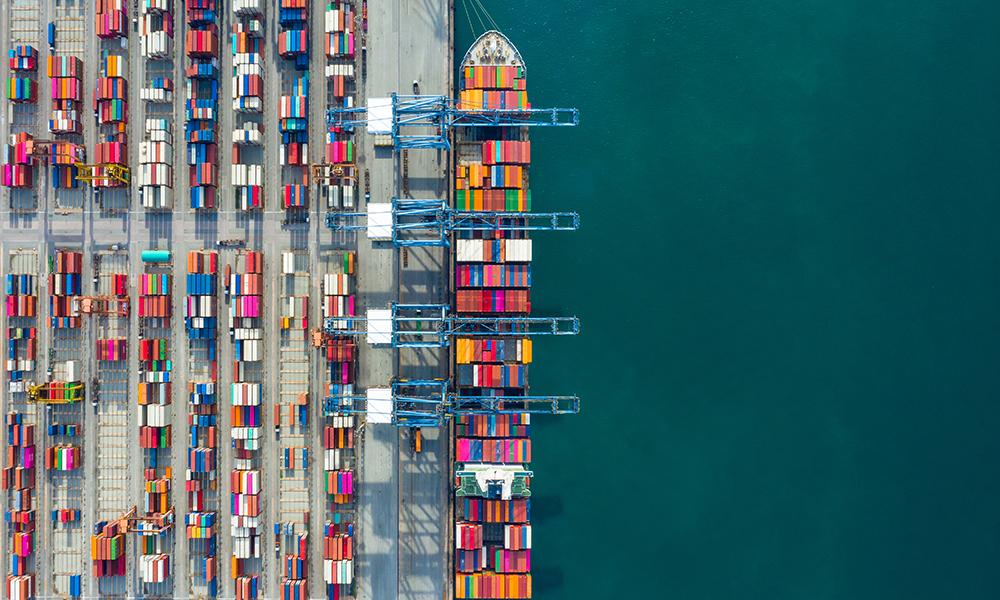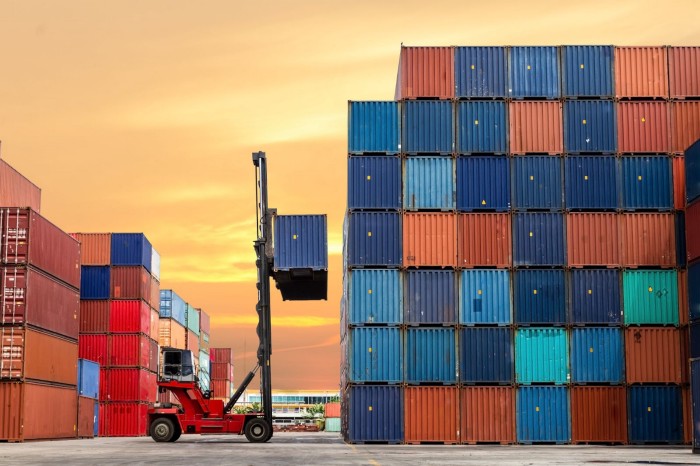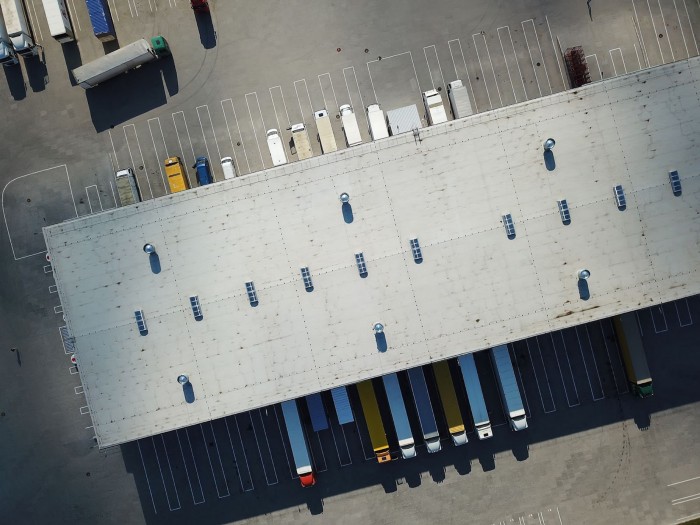
Until recently, the global supply chain hasn’t exactly been a frequent topic of dinner table conversation; but these days, it’s captured everyone’s attention. Retailers are urging (begging) consumers to shop early for the upcoming season. Repair services face frustrated customers who can’t fathom how it could take so long — in this era of tech-driven immediacy — to get a few parts back in stock. Parents everywhere are panicking that holiday promises will go, literally, unfulfilled.
For most of us, shipping is an industry that has seemed to exist as a quietly functioning, effortless transfer of goods from Point A to B. When the seas are calm, operations flow smoothly. But when something goes wrong and those operations erode, we only realize it when things, well, don’t arrive on time. And, while shipping is facing its fair share of challenges (more on that below), it’s not the only industry that’s in crisis mode. Supply chains also rely on containers, ports, railroads, warehouses and trucks, all of which are constrained by labor and resource shortages. And so, we are entering a new stage of the pandemic economy: GDP is up, but it’s becoming harder and harder to buy.
Why is this happening, and most importantly, what can we do to pivot and move forward? I grew up in the world of shipping, and now as a General Partner at TMV invest in startups that are building the future of supply chain and transportation globally. So, I thought I’d shed some light on the key issues causing all the chaos and the companies who are working to help us change course.
Shipping Container Shortage

Of the 90% of the world’s goods that are transported by sea, ~ 60% are packed in large steel containers and carried by container ships. These containers can handle huge volumes of consumer packaged goods, apparel, manufacturing parts, electronics and other materials we use every day. Today they are in unprecedented short supply due in part to surging demand to restock inventory (a direct result of our pandemic purchases, as consumer spending shifted from services /experiences to goods and home improvement). And, remember all that stuff we hoarded (looking at you toilet paper, flour, Clorox wipes)? The high demand for imports has made it difficult for businesses to restock these goods, which is only adding to the problem. These backlogs, plus a storm of disruptions, have left many thousands of containers stranded at sea or on ships anchored near congested ports (you’ve seen the pictures), with huge delays in unloading that stem beyond the vessels themselves. But more on that, later.
It’s not only heightened demand that’s driving the short supply: it’s also a miscalculation that stems back to the early months of the pandemic, in the spring of 2020, when consumer spending slowed and many shipping routes between Asia and North America were canceled. As demand returned in the months to follow, there were thousands of empty containers stuck in the U.S. and exporters in China faced long delays waiting for the return of boxes to ship their goods. And then, of course, there was the blockage of the Suez Canal, the shutdown of a major port in southern China and ongoing congestion at ports across the globe. So, ultimately, it became a problem of getting container ships where they need to go, which has skyrocketed the price of shipping containers. The average price worldwide to ship a 40-foot container has more than quadrupled from a year ago, to $8,399 as of July 1. According to the WSJ, some companies claim they are being charged upwards of $20,000 for stealth agreements to get cargo on outbound ships.
Port Congestion and Delays
Port congestion can happen for a number of reasons: ports booked to capacity, equipment shortages, slow productivity, inadequate yard space, among others. When a container ship arrives at port, it’s given a berth (an allotted space at the dock). Congestion starts to build when a ship must wait for a berth to become available and thus linger at anchorage, which is essentially a waiting area for cargo vessels. And, an increase in the number of containers coming off ships means that the container yard needs to be cleared even more quickly and efficiently to keep up. The slower the yard is cleared, the faster it reaches capacity, the longer ships wait, the more vessels accumulate…you get the picture. Things compound.
And, it doesn’t stop at the shipyard. It requires large fleets of trucks to move product from there to its next destination. So, when there’s chaos at the shipyard, the processes that might result in a seamless hand-off of cargo completely unravel, resulting in a seemingly endless cycle of backlog and delays. Here’s what that actually looks like:
The average container ship holds ~ 14,000 containers of merchandise with an average value of $100,000. There is currently a total of $106,400,000,000 of inventory sitting in limbo, expiring or losing value.

COVID is the Catalyst, Not the Cause
It’s easy to attribute port congestion, high freight bills, critical shortages and delivery delays to the pandemic. Americans working from home stopped spending on experiences and started splurging on stuff, from laptops to workout equipment (who else waited 3 months for 3-lb dumbbells?). This astronomical rise in spend overwhelmed freight channels and left them spinning for solutions. But the pandemic is not the root cause of the current situation; it merely brought to light existing weaknesses in our supply chain: “Information sharing and additional transparency is one of the few areas where indisputably we could get more capacity out of the current system,” says Dan Maffei, chairman of the Federal Maritime Commission. Long before COVID, the U.S. lagged other major economies in the efficient transport of goods, ranking 14th out of 160 countries, down from 9th four years earlier. The FMC warned as early as 2015: “Congestion at ports and other points in the nation’s intermodal system has become a serious risk factor to the relatively robust growth of the American economy and to its competitive position.” COVID merely exacerbated and accelerated the inevitable.
So, What Do We Do About It?
Short of cutting off all consumer spending for the foreseeable future, we believe the solution is in streamlining and modernizing the global supply chain through a mix of rigorous transparency, digitization, emerging technology, AI, planning and collaboration. These are exactly the types of companies in which we invest.
One of TMV’s recent investments, Portcast, predicts container arrival times and forecasts container demand. According to founder Nidhi Gupta: “One way to mitigate this worsening situation is to be proactive in planning downstream supply chain response and procurement. That’s where predictive visibility and explainable AI become important; our immediate product roadmap allows visibility at an order level — and an understanding of Co2 emissions at a unit level — which makes it valuable for shippers in times of disruption.”
The trucking industry, too, is facing two major challenges: labor shortage and a record amount of freight needing transportation. Tony Singh, founder of Channel19, another TMV portfolio company, says: “Channel 19 enables small trucking companies to optimize routes for efficiency, which in turn drives sustainability by reducing unnecessary time on the road and minimizing empty return trips.”
As the world’s major ports face astronomical pile-ups of cargo, what once seemed like a temporary traffic jam looks increasingly like a new reality, one that will require an immediate and robust redesign of global shipping infrastructure. The supply chain chaos isn’t dissipating anytime soon. And it’s officially time for a change.
If you are building innovative solutions within the global supply chain, we want to hear from you.
Written by Marina Hadjipateras